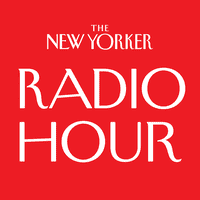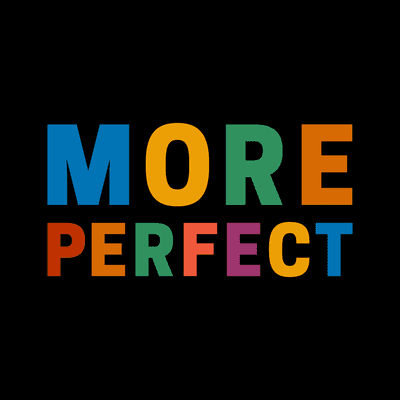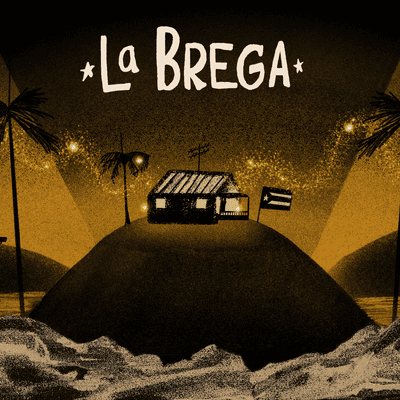The Director Rob Marshall on Halle Bailey as “The Little Mermaid”

David Remnick: The Little Mermaid, a remake of the animated classic that's now using live actors opens this weekend. A remake like this is not without all kinds of risks. The underwater musical sequences have to convince us that they're real. Generations of fans grew up on the 1989 original, and they'll hold it to some very high standards. Ever since the singer and actress Halle Bailey was announced as the new Ariel, there's been a racist backlash from a small but loud chorus on social media, and it feels all too familiar.
Speaker 2: While it's got a lot of fans, it is also being attacked by some internet trolls.
Speaker 3: Actress Halle Bailey stars as Ariel in Disney's new live-action film, and she looks nothing like the animated Little Mermaid with red hair from the original 1989 classic. Then there are the ugly racist tweets. The Little Mermaid is white, not Black.
David Remnick: Naomi Fry covers pop culture for The New Yorker, and she talked about The Little Mermaid the other day with its director, Rob Marshall. Now, Marshall is not your typical blockbuster director, he began his career as a dancer on Broadway, but he was injured while performing in Cats, so he eventually turned to filmmaking. Since then, Marshall has directed Chicago, which 20 years ago won the Oscar for Best Picture, and he's made ambitious musical films like Into the Woods and Mary Poppins Returns. Here's Rob Marshall talking with Naomi Fry.
Naomi Fry: Thank you so much for being here [crosstalk]
Rob Marshall: Thank you, Naomi. Lovely to be here.
Naomi Fry: Seems like such a monumental achievement to even approach this text and bring it to the screen in the way that you have. I guess I'll start by asking, what was your relationship with The Little Mermaid before starting this project? Were you a fan? Did you have any thoughts about it or associations?
Rob Marshall: Yes. Well, you know it's funny in 1989, when the film came out, the animated film, I was doing Broadway, and I remember the whole Broadway community was so excited that this film was coming out because it was really the return of the musical to the screen. Even though it was animated there was like a proper score, people actually singing.
[MUSIC - Samuel E. Wright: Under the Sea]
Sebastian: Life under the sea
Is better than anything they got up there
The seaweed is always greener
In somebody else's lake
You dream about going up there
But that is a big mistake
Just look at the world around you
Right here on the ocean floor
Such wonderful things surround you
What more is you lookin' for?
Rob Marshall: Musicals were dead at that point, and so we were so excited. I was so thrilled to see it in the theater. I remember later, years later when I did the film Chicago, it felt like that was pushing the door open for live action musicals. In a way, it all started with This Little Mermaid in 1989 because it was really a resurgence of musicals on film.
[MUSIC - Samuel E. Wright: Under the Sea]
Sebastian: Down here all the fish is happy
As off through the waves they roll
The fish on the land ain't happy
They sad 'cause they in their bowl
But fish in the bowl is lucky--
Rob Marshall: You think about all those incredible films like Beauty and The Beast and Aladdin, all those musicals, original musicals for film that came. I've always had like a connection to it, feeling like it opened the door for me in Chicago.
Naomi Fry: That's so interesting to think about. I guess, not being part of the Broadway community, I've never thought about it in that way. For me, it was just like a bowl of Disney animated movie, but it does have that component of being a full-on musical.
Rob Marshall: And it's on screen. That was the connection to it. Then musicals for me, my first movie that I ever saw was Mary Poppins, but there was Oliver and My Fair Lady and Sound of Music. Those movies just shaped me as a young child. Literally, I was always dancing around my house, literally around the living room, literally. One time I was like dancing from couch to chair to couch to chair and landed on the coffee table and broke it.
Naomi Fry: Oh God.
Rob Marshall: That was not good. If it's in you, it's in you. You somehow you catch the bug and it's part of you.
Naomi Fry: Was it an immediate yes from you and they [crosstalk]?
Rob Marshall: No, actually it wasn't. In fact, I think we might have turned it down twice.
Naomi Fry: Interesting.
Rob Marshall: Well, because we thought, well, how do you do that? I was also concerned about a remake. I really didn't want to do a frame-by-frame remake of something, but they were excited about us reimagining it and looking at it from another angle. I have to say, for me, I went back to the Hans Christian Andersen tale.
Naomi Fry: Interesting.
Rob Marshall: That really helped me because I saw in that a very modern story. It's really timeless about a young girl who feels displaced, doesn't feel she belongs, and really embarks on a journey of self-discovery and also breaking down the barriers and walls between herself, her world, and the other world.
[MUSIC - Samuel E. Wright: Under the Sea]
Ariel: Look at this stuff.
Isn't it neat?
Wouldn't you think my collection's complete?
Rob Marshall: It was really about prejudice and breaking down those barriers. I just felt, wow, isn't that the world we live in? For me, the whole time I was doing this movie, it felt really like an antidote to the times we're living in. The divisive world we live in. I got excited about the idea of the story and of this movie. Then it was really, how do you do it, though?
Naomi Fry: Exactly?
Rob Marshall: How do you do it?
Naomi Fry: What was the first, for me watching it, and I imagine for a lot of laypeople watching it who aren't knowledgeable about exactly how CGI works and how thinking about directing and doing choreography and singing vis-à-vis these new technologies, what is the first step when you approach a project like this?
Rob Marshall: Such a good question. The first thing we did really was realize that we had to do all of the underwater work in a blue screen stage because we can't use actual water because people are singing-
Naomi Fry: Right, bubble singing.
Rob Marshall: -and speaking. It doesn't work like that, so we had to create that environment. What I realized was we had to be weightless. People had to be able to fly around and move and swim and that was the whole idea.
Naomi Fry: Exactly.
Rob Marshall: I realized that the way to start would be the conventional way which is storyboarding. You storyboard the scene like this is how it should be. That moved into something called animatics, which is like a live storyboard, like a moving storyboard. Then we moved into something called pre-visualization, which is almost like a little mini-movie, little mini-animated movie. You have this all planned out prior and that took months and months and months and months and months.
Naomi Fry: This is all digital or does it involve any live actors [crosstalk]?
Rob Marshall: Not yet. It's really just the shape, because what we had to do is we had to communicate what the scene would be to the stunt teams and to our production designer and costume designer and cinematographer how we're going to move the camera, how are we going to move the actors around. Literally in a scene, as an example, in a scene, I would say action, eventually, and the actors would be on one rig and they would do a couple lines and I'd say, "Cut." Now we'd have to put them on another rig to do that move. It was literally shot in pieces. The goal for me is that when you see the film, you're unaware of any-
Naomi Fry: Sure, it's seamless.
Rob Marshall: -seamless. Also, what's there that's real are the people, but what's not real is the CGI elements is everything around them. The water, the vegetation, the fish, all of those things, the whole world around them, that's completely digital, as is their hair. They all had wig caps. They all had wig caps because the hair is moving.
Naomi Fry: I was going to ask about the hair.
Rob Marshall: Yes. Then even Ariel's costume is all digital. Now of course, we built it so that when she's on land, you see it but underwater, it was just-- I guess Javier Bardem as Triton had his armor so that was truly real. Melissa McCarthy as Ursula, her top a lot of that was real.
Ultimately, it was all creative. That's why the movie took four and a half years because the post-production on this took two years. I was relentless about the look of it because you had to believe. For me, as soon as I'm in a film and I see some CGI work that I feel is just so artificial, I feel.
Naomi Fry: Can you tell is that something that--
Rob Marshall: I can unfortunately, I try not to. I just want to live in the world, but when it pulls you out, it's not good.
[MUSIC - Samuel E. Wright: Under the Sea]
Rob Marshall: The funny thing about musicals for me in general, is a musical, especially a musical film, can go off the rails in two seconds because there's that moment when someone starts to sing where it either feels organic and earned and real, or it feels completely embarrassing. [laughs]
Naomi Fry: Oh,, totally because it's a moment of artifice. It's like, "Oh, suddenly you're singing. What's happening?"
Rob Marshall: Exactly. It only works when it feels like an extension of the scene in some was, like words aren't enough so you sing or the movement's not enough, so you dance. It should feel seamless and organic and that's always been the goal. I'm always aware of that when I'm working on a movie, especially because it's such a real genre. You're sitting in the movie. It's different in the theater. You're in a theater, and it feels artificial already, someone saying it doesn't feel, it's too strange but movies are so realistic that you have to be so careful about how that first moment happens when the first moment of singing happens. In our film, Ariel sings Part of Your World. That's the first musical number in the movie. It's 15 minutes in.
Naomi Fry: Right, it takes a while because I was watching and I was like, "Okay, I know this movie is supposed to be a musical." I was like, "Oh, she's singing. It's been a while since the beginning. It does take a little bit."
Rob Marshall: It does. Every musical has their own shape and this is the shape of that because that song is literally our version of Somewhere Over the Rainbow. It's an "I want" song and it's what begins the motor of the whole piece. What's her goal? What does she want? When people talk about "I want songs," they always reference Part of Your World or Somewhere Over The Rainbow. That's what that is.
At the beginning, I wanted to create a real world above on the ship. I wanted to make sure that you were inside the story and believed it before we're asking people to hear someone sing. What I love about Part Of Your World is that it's just her thoughts. It's an extension of what she's feeling as she's speaking to Flounder. I don't understand why those people up there, why we should be afraid of them, because she's collecting all these beautiful things. They make all these beautiful things, I don't believe they can be that bad.
I feel like, wow, she has that moment she can actually sing it and it can come from her almost like an internal monologue coming out of her. The goal is that by the time she sings, you're ready for that. You feel ready and now you're ready and you can embrace a musical.
[MUSIC - Howard Ashman and composer Alan Menken: Part of your World]
Ariel: Betcha on land they understand
But they don't reprimand their daughters
Bright young women sick of swimmin'
Ready to stand
And ready to know what the people know
Ask 'em my questions and get some answers
What's a fire and why does it, what's the word? Burn?
When's it my turn?
Wouldn't I love, love to explore that shore up above?
Naomi Fry: That obviously also touches on all of these questions of cultural, the complaints that because Halle Bailey is a woman of color, and this is a very diverse version of the story adaptation of the story. There was backlash that this is like, "Oh it's too woke. Disney is going woke," all of that talk.
Rob Marshall: Yes. It's ironic. I'll tell you why. There was zero agenda.
Naomi Fry: Interesting, okay.
Rob Marshall: When we went to cast the role of Ariel, it was let's find the best person for the role, period. That was it. We saw every body. We saw every ethnicity. We just looked for the best person. Halle came in. She sang Part of Your World. It was so moving, so touching, so deep, and then she read for us. She was 18 when she came in for us. She's 23 now so that's the length.
Naomi Fry: Right. That's how long it took. Yes.
Rob Marshall: She was other-worldly and when people see the film, they'll see she's Ariel. I never thought once about skin color. I will say it was my intention to make the sisters, the daughters of the Seven Seas, because I really wanted to lean into the mythology of Triton and all of that. I thought, here we are. We have seven of these mermaids so let's make them the daughters of the Seven Seas. That was fun. It was never like, "Let's do a woke version of Little Mermaid." It was, "Let's just do the best version of The Little Mermaid." To me, this whole controversy in a way feels archaic, like from another century. I did Cinderella as a choreographer in 1997 with Brandy playing Cinderella.
Naomi Fry: Oh, yes. I remember that, of course.
Rob Marshall: Remember that, with Whoopy and this fabulous cast, and Whitney Houston. It was a colorblind casting and it was new at that time, but that was 1997.
Naomi Fry: Yes. Thanks so much, Rob. Thank you.
Rob Marshall: No, this has been a pleasure.
Naomi Fry: This has been so nice.
David Remnick: Rob Marshall is the director of Disney's new Little Mermaid and he spoke with Naomi Fry, a staff writer at The New Yorker.
[MUSIC - Halle Bailey: For the First Time]
Look at the sun and the sky and the sand and
the sea behind me.
Look at me, suddenly I am on land and I'm free. Don't mind me as I climb--
Copyright © 2023 New York Public Radio. All rights reserved. Visit our website terms of use at www.wnyc.org for further information.
New York Public Radio transcripts are created on a rush deadline, often by contractors. This text may not be in its final form and may be updated or revised in the future. Accuracy and availability may vary. The authoritative record of New York Public Radio’s programming is the audio record.





